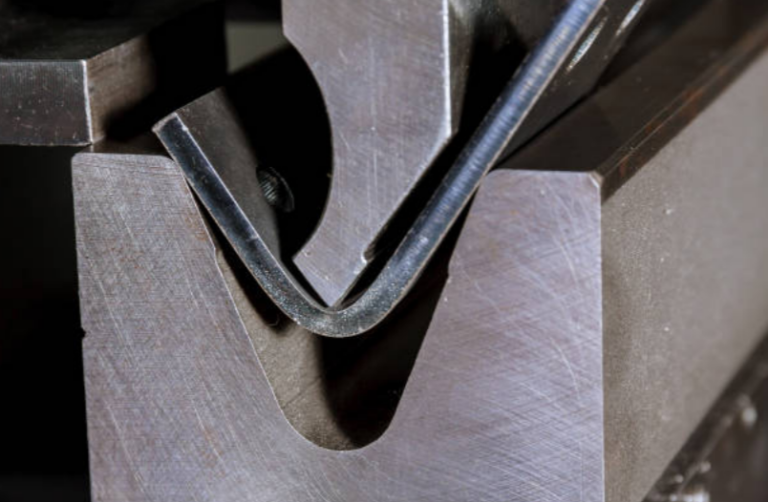What Is Tiered Link Building? How It Works and Why SEOs Use It

Tiered link building is a smart SEO strategy. It builds multiple layers of backlinks to increase your website’s authority. Imagine it like building a pyramid where each level helps the one above it.
This method starts with direct links to your site (Tier 1). Then, it adds more backlinks (Tier 2) to support those. Sometimes, there are even more layers. Digital marketing professionals like it because search engines see sites with diverse backlinks as more trustworthy.
This strategy is very popular among SEO experts. It boosts the power of your main backlinks by adding strategic support.
In this guide, you’ll learn how this powerful technique works. We’ll cover how to use it, common mistakes to avoid, and effective tactics for better search rankings.
Key Takeaways
- Tiered link building creates multiple layers of backlinks to strengthen your website’s authority
- The strategy uses Tier 1 links pointing directly to your site, supported by Tier 2 and Tier 3 links
- This approach helps diversify your backlink profile and appears more natural to search engines
- SEO professionals favor this method because it amplifies the power of primary backlinks
- Proper implementation requires careful planning and quality control at each tier level
- The technique can significantly improve search rankings when executed correctly
Understanding Tiered Link Building
Tiered link building might seem complex, but it’s based on simple ideas. This tiered link building guide will explain how it builds a network of links. This network boosts your website’s authority, like a pyramid where each level supports the next.
Unlike traditional link building, tiered link building creates layers of connections. It mirrors how information spreads naturally online. This makes your link profile look more natural to search engines.
Core Concepts and Framework
At its core, tiered link building is like a digital ecosystem. Links flow into other links before reaching your site. The first tier has high-quality links directly to your site. The second tier has links to those first-tier links, boosting their authority.
This method is different from basic link building. It focuses on link velocity and natural patterns. You’re building a web of connections that search engines see as genuine and valuable.
Many SEO experts compare it to building a strong house foundation. Each tier adds stability and strength to your website’s authority, making it more resilient over time.
Why This Strategy Matters for Modern SEO
Search engines are now very good at spotting artificial link patterns. They can easily see when websites try to manipulate rankings. Tiered link building creates more natural link patterns.
The importance of this approach is clear when you think about how Google evaluates websites. Google doesn’t just count backlinks. It looks at the entire link ecosystem around your content. Sites with diverse, multi-layered link profiles usually rank better.
This strategy also protects your SEO efforts in the long run. If one tier of links has issues, the others keep supporting your profile. This makes your website less likely to be affected by algorithm changes or link penalties.
Modern SEO success goes beyond just counting links. Tiered link building creates comprehensive authority signals that search engines value. This leads to more stable and sustainable rankings over time.
The Structure of Tiered Link Building
Tiered link building is like a pyramid. Each level has a special role in your SEO plan. This method builds a powerful foundation for your website’s authority. Knowing the types of tiered link building helps make your campaigns better.
The three-tier system is like a support network. Each tier has its own goals and characteristics. Let’s see how each level works in this structured approach.
| Tier Level | Link Quality | Typical Sources | Primary Purpose | Volume Range |
| First Tier | Highest Quality | Authority Sites, Guest Posts | Direct Authority Transfer | 5-20 links |
| Second Tier | Medium-High Quality | Niche Blogs, Web 2.0 | Support First Tier | 50-200 links |
| Third Tier | Medium Quality | Social Bookmarks, Forums | Foundation Building | 200-1000 links |
Primary Links That Drive Results
First tier links are the crown jewels of your strategy. They point directly to your website and are most important to search engines. They come from trusted, high-authority domains with relevant content.
At this level, quality is more important than quantity. You need links from sites that Google trusts. Think of major publications, respected blogs, and authoritative news sources.
These links should be natural and add value to readers. The content around your link must be engaging. First tier links are hard to get but have the biggest SEO impact.
Supporting Links That Strengthen Your Foundation
Second tier links don’t go straight to your main site. They support your first tier links by linking to pages with your primary links. This creates a reinforcement system that boosts your top-tier content’s authority.
These links come from medium-authority sources. Web 2.0 properties, niche blogs, and forums work well here. The goal is to keep relevance while building volume.
Second tier links help search engines see your first tier content as valuable. They create a natural link ecosystem that looks organic to search algorithms.
Supplemental Links That Build Volume
Third tier links are the base of your pyramid. They point to your second tier sources, building a broad foundation of authority signals. They help establish your supporting content’s credibility.
At this level, volume is more important, but quality still counts. Social bookmarking sites, directory submissions, and forum profiles can be effective. The aim is to create a diverse link profile that looks natural.
Third tier links need careful balance. Too many low-quality links can harm your strategy, while too few won’t support your upper tiers enough.
The Benefits of Tiered Link Building
Building links in tiers offers big benefits that change how search engines see your site. This method gives you advantages that traditional link building can’t match. It provides both quick and lasting benefits for your SEO.
Website owners who use tiered link building benefits see big improvements in their online presence. This method creates a natural flow of authority that search engines love. It helps your site shine in competitive markets.
Read more: Technological Changes Altering Business in 2025
Boosting Your Site’s Authority and Search Rankings
The biggest plus of tiered link building is its power to boost domain authority more than single-tier methods. By creating multiple layers of links, each tier boosts the next. This creates a strong effect that increases your site’s credibility.
Search engines see this link pattern as real and valuable. The first tier gives direct authority to your main pages. The second and third tiers then make those links stronger, building a powerful foundation for better rankings.
Studies show that sites using tiered strategies often beat competitors with similar content. The layered approach tells search engines your content is worth more visibility. This leads to better search positions over time.
Creating Varied and Robust Link Profiles
Another big plus of tiered link building is enhanced link diversity. Traditional methods often lead to repetitive patterns that search engines spot easily. Tiered link building benefits include varied anchor text, link sources, and timing.
This diversity helps your site avoid algorithm updates that target unnatural link patterns. Each tier can use different types of websites and content formats. Social media links, blog comments, and guest posts all work together in harmony.
The varied approach also makes your site less dependent on any single link source. If one type of link loses value, your other tiers keep supporting. This creates a resilient SEO foundation that can handle competitive challenges and search engine changes.
Long-term success is easier when your link profile looks natural and diverse. The tiered structure automatically creates this diversity without needing a lot of planning. Your site gets stronger from many angles, not just one.
How Tiered Link Building Works
Creating a tiered link strategy needs careful planning and the right steps. It’s about making a system that links different levels of links to boost your site’s authority. Knowing how these tiered link building techniques work together is key to a strong SEO base.
Success comes from seeing each tier as part of a bigger system. Your first-tier links need strong second-tier support. Your second-tier links get a boost from third-tier links. This way, every link in your network adds more value.
Strategic Planning and Foundation
Your strategy starts with picking your target keywords and looking at your competitors’ links. You need to see what links your competitors have. This shows you gaps to fill and chances you might have missed.
Planning your timeline is key for growth. Most tiered link building techniques take months. Rushing can get you penalties from search engines. Taking too long lets competitors take your spots.
How much you spend affects your campaign’s reach and success. Think about your budget for content, outreach tools, and team time. Quality is more important than quantity in today’s link building.
Focus on the most important opportunities first. Start with your key pages and keywords. Build strong first-tier links to these pages before moving to supporting content.
Essential Tools and Implementation Methods
Professional tiered link building techniques use special tools for research, outreach, and tracking. The right tools make your work easier and improve your success. They also help you avoid mistakes that can hurt your rankings.
Link research tools help find good prospects for each tier. Look for tools that show domain authority, spam scores, and competitor analysis. These tools help you choose the right targets and avoid bad opportunities.
Outreach automation tools save time and keep messages personal. The best platforms let you create templates but also customize each message. They track responses and follow-ups automatically.
| Tool Category | Primary Function | Best For | Tier Focus |
| Link Research | Prospect identification and analysis | Finding high-authority targets | First and Second Tier |
| Outreach Automation | Email campaigns and follow-ups | Scaling personalized outreach | All Tiers |
| Content Management | Creating and distributing content | Supporting link acquisition | Second and Third Tier |
| Tracking and Analytics | Monitoring link performance | Measuring campaign success | All Tiers |
Success in implementation comes from consistent effort and regular checks. Set up tracking systems before starting. This lets you see how you’re doing and adjust based on real data.
Start small with test campaigns to see what works. Build a few link tiers before expanding. This helps you find what’s best for your industry and audience.
Common Strategies for Effective Tiered Link Building
The best tiered link building campaigns mix old and new methods. These strategies help SEO experts build sustainable link networks for lasting results. Knowing which tactics work at each tier is key to success.
Marketers should focus on building relationships, not just links. This approach leads to more natural link patterns that search engines like. The right strategy for each tier is crucial.
Guest Blogging and Content Creation
Guest blogging is a top method for a tiered link building strategy. Start with high-authority guest posts in your field. These need top-notch content and strong editor relationships.
Second-tier content supports your main guest posts with extra context. Publish related articles on sites with medium authority that link to your first-tier content. This helps link equity flow naturally.
Third-tier content spreads your message wider. Use blog comments, forums, and community posts to build your presence. These don’t always get direct links but lay the groundwork for future chances.
Content creation strategies succeed with templates and workflows. Use content calendars that match your link building goals. This method ensures quality and scales your efforts well.
Social Media Engagement
Social media is key in modern tiered link building. LinkedIn articles can be first-tier content that grabs industry attention. Twitter threads help spread your message and create engagement.
Facebook groups and Reddit communities are great for second-tier links. Share valuable content that naturally includes links to your work. Focus on adding real value, not just promoting links.
Instagram and TikTok are good for third-tier brand awareness. They help show your expertise and personality. While they don’t directly boost SEO, they support your link building efforts.
Social media engagement indirectly helps your tiered strategy. More visibility leads to more natural links. Content creators find your work through social media and might link to it in their articles.
The best strategy combines various methods at each tier. Try different approaches to see what works for your industry and audience. Building relationships takes time, but the payoff is worth it.
Best Practices for Tiered Link Building
Mastering tiered link building for SEO needs a focused approach on quality and improvement. Success comes from following proven guidelines. This separates effective campaigns from those that fail.
These essential practices are the foundation of a successful tiered link building campaign. They help you avoid common pitfalls and maximize your investment. Let’s explore the key principles that will elevate your strategy.
Quality Over Quantity
The most critical principle in tiered link building is prioritizing link quality at every tier. Many SEO practitioners make the mistake of accepting low-quality links in their second and third tiers. This approach is fundamentally flawed and can harm your entire campaign.
High-quality links share several key characteristics you should evaluate before inclusion. Domain authority is a good starting point, but don’t rely solely on this metric. Look for sites with genuine traffic, engaged audiences, and content that aligns with your niche.
Here are the essential quality indicators to prioritize:
- Relevant content that matches your target keywords and audience
- Active engagement through comments, social shares, and regular updates
- Clean link profiles without spam or suspicious linking patterns
- Mobile-friendly design and fast loading speeds
- Established domain age with consistent publishing history
Red flags to avoid include sites with thin content, excessive outbound links, or obvious link farming practices. Trust your instincts when evaluating potential link sources. If a site feels spammy or irrelevant, it probably is.
Remember that search engines evaluate your entire link network. One poor-quality link can potentially damage the value of several high-quality ones. This makes quality control absolutely essential across all tiers of your strategy.
Regular Analysis and Adjustments
Successful tiered link building requires ongoing monitoring and optimization rather than a set-it-and-forget-it approach. Regular analysis helps you identify what’s working, what needs improvement, and where new opportunities exist.
Establish a monthly review schedule to evaluate your campaign performance. During these reviews, examine your ranking improvements, traffic changes, and overall link profile health. This consistent monitoring allows you to catch issues early and capitalize on successful strategies.
Your analysis framework should include these key components:
- Performance tracking of target keywords and ranking positions
- Link quality assessment to ensure standards remain high
- Competitor analysis to identify new opportunities
- Traffic pattern evaluation to measure real-world impact
Data-driven adjustments separate successful campaigns from mediocre ones. When you notice declining performance in specific areas, investigate the root causes and implement corrections quickly. When certain strategies show exceptional results, scale them appropriately.
Document your findings and decisions to build institutional knowledge over time. This practice helps you avoid repeating mistakes and enables you to refine your approach continuously. Successful SEO professionals treat tiered link building as an evolving strategy that improves through systematic optimization.
Pitfalls to Avoid in Tiered Link Building
Tiered link building can greatly improve your SEO, but it has its risks. Knowing how to avoid these mistakes is as crucial as knowing the right strategies. Let’s look at the main dangers that can harm your SEO tiered link building efforts and how to avoid them.
“The biggest mistake in link building is focusing on quantity over quality. One high-quality link is worth more than a hundred low-quality ones.”
— Industry SEO Expert
Recognizing and Avoiding Low-Quality Links
Low-quality links are a big threat to your tiered link building success. They can actually damage your search rankings instead of helping them. Search engines are now very good at spotting spammy links.
There are signs that a link might be low-quality. Sites with thin content, too much advertising, or unrelated topics are red flags. Also, sites that sell links without checking them are not good for SEO.
Bad links can cause long-term problems. Google’s algorithms can punish you for months or even years. Your SEO tiered link building plan must focus on quality at every level to avoid these problems.
When checking links, look at domain authority, content relevance, and editorial standards. Sites with regular updates, engaged readers, and clear policies are safer. Always check a site’s history and reputation before linking to it.
Balancing Optimization Without Triggering Penalties
Over-optimization is a hidden danger in tiered link building. You want to improve your SEO but too much can get you penalized. The goal is to have a natural-looking link profile.
Using different anchor text is key to avoiding over-optimization. Don’t use the same keyword-rich text for all links. Mix branded anchors, generic phrases, and natural variations.
Link speed is also important for SEO tiered link building. Getting many links at once looks unnatural. It’s better to get links gradually over time.
Being strategic and patient is more valuable than getting as many links as possible. Focus on quality over quantity. This approach takes time but gives better results in the long run.
Remember, successful tiered link building needs smart planning and careful action. By avoiding these common mistakes, you’ll build a strong SEO base that can handle updates and competition.
Measuring the Success of Tiered Link Building Strategies
Measuring the success of a tiered link building campaign is key. Without tracking the right metrics, even the best strategies can seem like a shot in the dark. Smart SEOs rely on data to see if their efforts pay off.
Good measurement goes beyond just checking if your rankings go up. It’s about tracking many data points to understand your campaign’s full impact. This way, you can see what works, find problems early, and make smart choices for the future.
Essential Performance Indicators
The most important metrics for your tiered link building strategy fall into several key categories. Each category gives unique insights into different parts of your campaign’s performance.
Ranking improvements are your main success indicator. Watch your target keywords’ positions every week. Note any changes, good or bad. Focus on keywords that help your business goals, not just for show.
Organic traffic growth tells a deeper story than rankings alone. Keep an eye on these important traffic metrics:
- Overall organic sessions and unique visitors
- Traffic quality through bounce rate and session duration
- Conversion rates from organic search traffic
- Revenue attribution from targeted keywords
Domain and page authority scores show your site’s growing credibility. These metrics change slowly, but steady improvements mean your tiered link building techniques are adding value over time.
Link profile diversity metrics help ensure your campaign stays strong. Watch the variety of linking domains, anchor text, and link types. A diverse link profile protects against algorithm changes and penalties.
Professional Tracking Solutions
The right tools turn raw data into useful insights. Professional SEO platforms offer tracking features that manual monitoring can’t match.
Ahrefs and SEMrush have great link tracking features. They monitor your backlinks, track ranking changes, and analyze competitors. Their historical data helps you spot trends and measure long-term progress.
Google Analytics and Search Console are key for understanding user behavior and search performance. These free tools show how your tiered link building techniques affect your business.
Specialized link monitoring tools like Monitor Backlinks or LinkResearchTools give detailed insights into link quality and potential issues. They alert you to lost links, new mentions, and changes in link authority.
Creating custom dashboards brings all your data together in one place. Combine metrics from different sources to build detailed reports. Regular reporting keeps everyone informed and helps justify your link building efforts.
Conclusion: The Future of Tiered Link Building
The digital marketing world is always changing. Search engines keep improving their algorithms, and businesses keep finding new ways to reach people. Knowing about tiered link building puts you ahead of the game for future SEO changes.
Trends to Watch
Artificial intelligence is changing how search engines see link quality. Machine learning can spot patterns in link networks better than ever. Google now looks more at content relevance and how users feel when they visit a site.
Voice search is becoming a big deal for link building. It opens up new ways to connect with people. Also, how your site works on mobile devices matters a lot now.
Social media is playing a bigger role in search rankings. Video content is more engaging for link building. Local SEO is key for businesses aiming at specific areas.
How to Stay Competitive in SEO
Keep checking your strategy to make sure it’s working. Watch for updates from search engines every month. Try out new link building methods on a small scale first.
Build good relationships with other websites in your field. Create content that people want to link to naturally. Use analytics to see how your link building is doing.
Change your approach based on what you learn from your data and the SEO community. This way, you can always improve your link building efforts.
FAQ
What exactly is tiered link building and how does it differ from regular link building?
Tiered link building is a smart SEO method. It builds links in layers, not just direct ones. The first tier has top-quality links straight to your site. The second tier links to the first, and the third tier supports the second.
This creates a pyramid structure. It helps your site’s authority more than single-layer link building. Search engines like this natural, diverse link profile better.
What are the main benefits of using a tiered link building strategy?
Tiered link building boosts your search engine rankings. It improves your domain authority. It also makes your link profile look more natural and diverse.It protects you from algorithm changes. You can use lower-quality links in higher tiers safely. This makes your SEO strategy more cost-effective and sustainable for long-term results.
How do I determine the quality of links for each tier in my strategy?
For first-tier links, choose high-authority sites with good domain ratings and relevant content. Second-tier links should come from sites with moderate authority. Third-tier links can include social media and web 2.0 sites.Always pick relevant links, avoiding spammy ones. This is true for all tiers.
What tools should I use for implementing and tracking tiered link building campaigns?
Use Ahrefs or SEMrush for link research. Google Search Console helps monitor your site’s performance. Majestic is great for detailed link analysis.For tracking, try MonitorBacklinks or LinkResearchTools. SEOs also use Google Sheets or project management tools to organize campaigns and track progress.
How long does it typically take to see results from tiered link building?
Results from tiered link building show up in 3-6 months. This time can vary based on your site’s authority, competition, and link quality. First-tier links may show impact sooner.The effect of second and third-tier links grows over time. Be patient, as search engines take time to evaluate your links.
What are the biggest mistakes to avoid in tiered link building?
Avoid using low-quality or spammy links. Don’t over-optimize anchor text with exact-match keywords. Building links too quickly can trigger penalties.Neglecting link diversity is also a mistake. Don’t use the same anchor text across tiers. Regularly check your link profile for toxic links.
Is tiered link building considered a white hat or black hat SEO technique?
Tiered link building is in a gray area of SEO. It’s white hat if you use high-quality, relevant links. But it’s black hat if you use spam links or automate too much.The key is to maintain quality and provide value, not just manipulate rankings.
How do I integrate guest blogging into my tiered link building strategy?
Use guest blogging for first-tier links by writing for authoritative sites. For second-tier links, guest post on sites with moderate authority. Always focus on providing value, not just getting links.Keep quality standards high across all tiers. This builds lasting relationships with publishers.
What key metrics should I track to measure my tiered link building success?
Track organic traffic growth, keyword rankings, and domain authority. Also, monitor your link profile’s health. Look at referring domains, total backlinks, and anchor text diversity.Check link placement quality and click-through rates. Watch for penalties or ranking drops that might indicate link building issues.
How can I ensure my tiered link building strategy remains effective as search algorithms evolve?
Stay up-to-date with Google algorithm changes and SEO news. Regularly audit your link profile to remove toxic links. Focus on building relationships, not just getting links.Diversify your link sources and maintain natural anchor text patterns. Always prioritize user value over search engine manipulation. Adapt your strategy based on performance and industry best practices to stay competitive.





